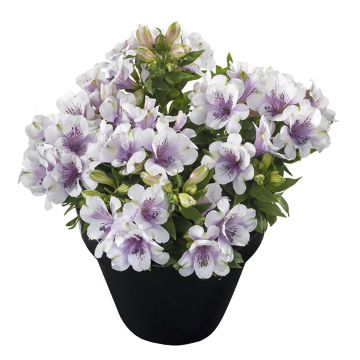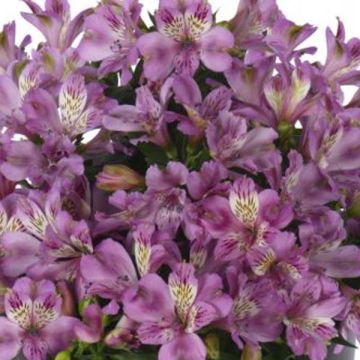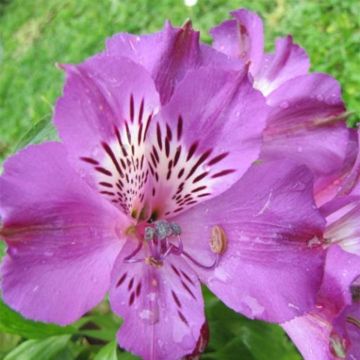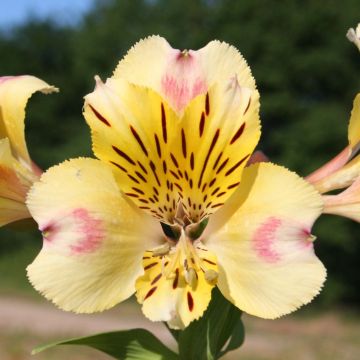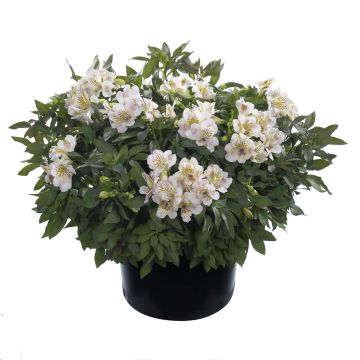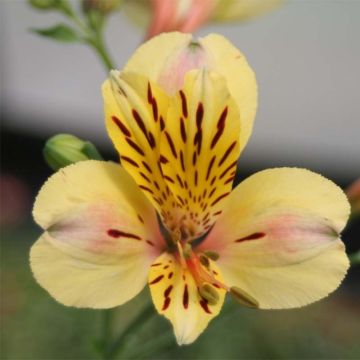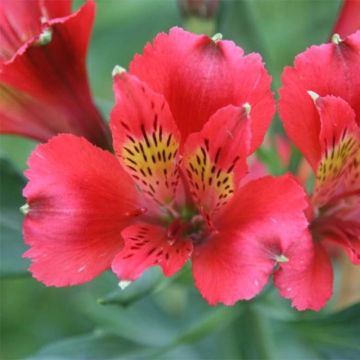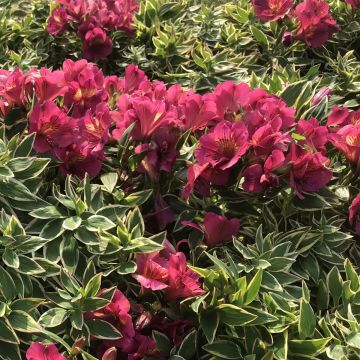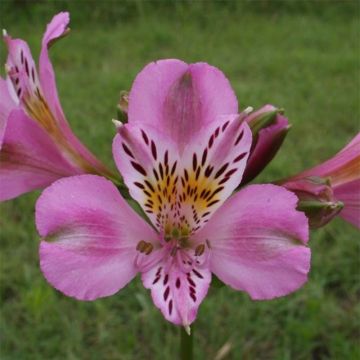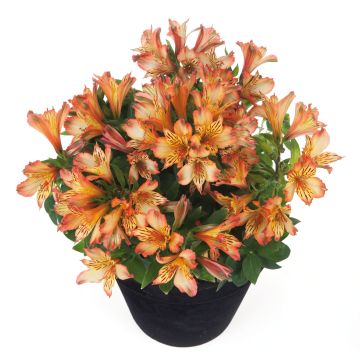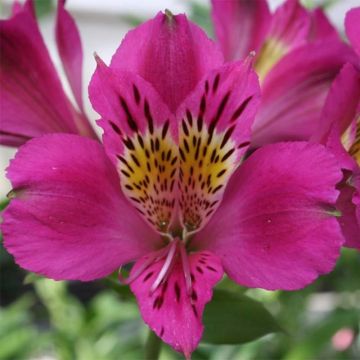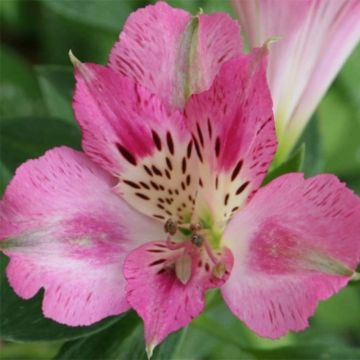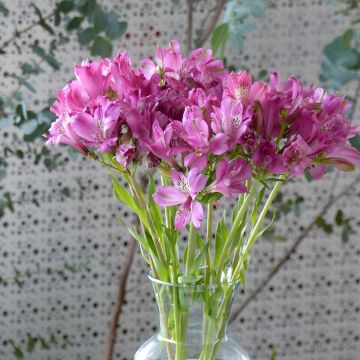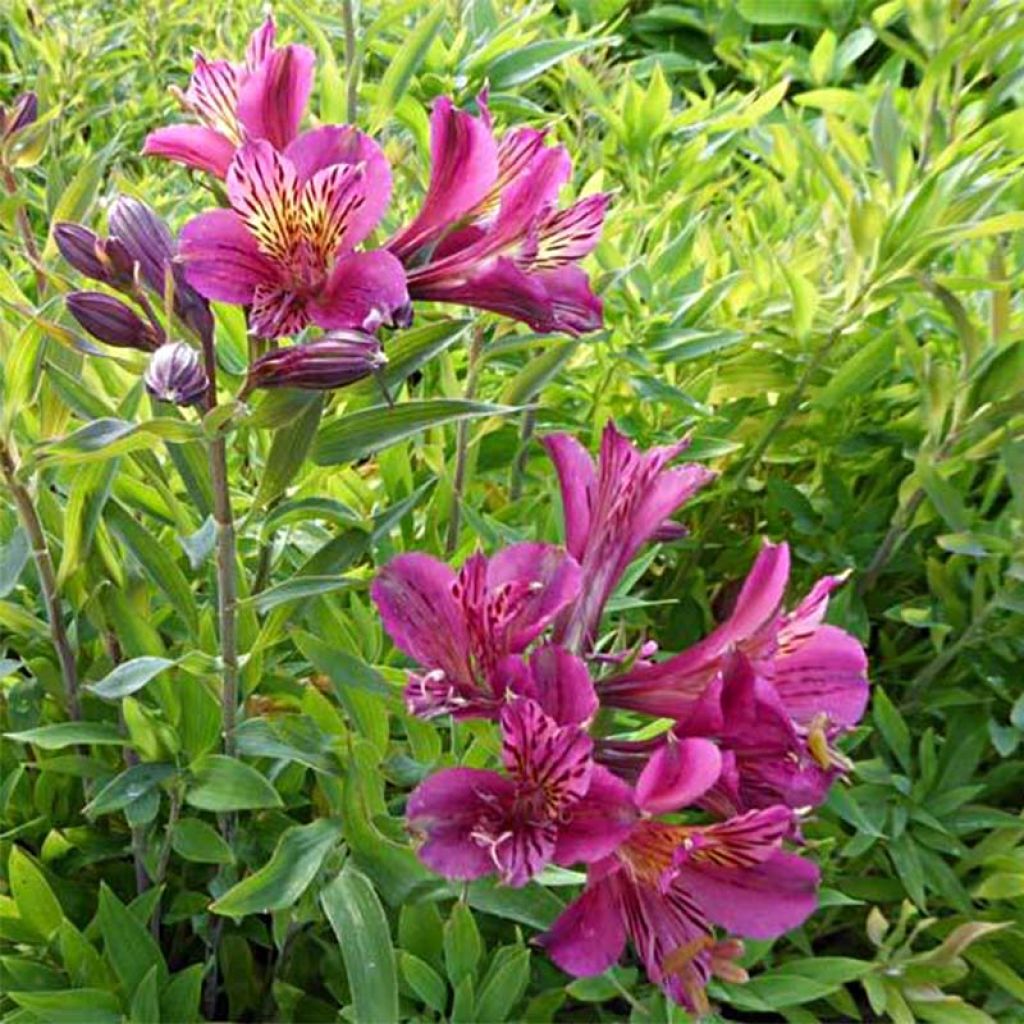

Alstroemeria Mauve Majesty - Lys des Incas
Alstroemeria Mauve Majesty
Alstroemeria Mauve Majesty
Peruvian Lily, Lily of the Incas
Why not try an alternative variety in stock?
View all →This plant carries a 12 months recovery warranty
More information
We guarantee the quality of our plants for a full growing cycle, and will replace at our expense any plant that fails to recover under normal climatic and planting conditions.
From €5.90 for pickup delivery and €6.90 for home delivery
Express home delivery from €8.90.

Does this plant fit my garden?
Set up your Plantfit profile →
Description
Alstroemeria 'Mauve Majesty' is part of a series of hybrids selected in the United States for their exceptional hardiness. It is probably the very first 'pink' variety capable of withstanding our normal winters, with or without protective mulch, when grown in properly drained soil. Its flowers, a lovely mauve-pink with cream markings and purple streaks in the throat, bloom tirelessly throughout the summer on sturdy flower stems that are not very tall, giving this compact plant an beautiful appearance in beds and sunny borders. You can also create beautiful bouquets with its flowers: they last for 15 days in a vase!
Alstroemerias, belonging to the Alstroemeriaceae family, are perennial plants with tuberous roots native to South America. The hardiest varieties, like A. aurantiaca, which are better adapted to our climates, come from the Chilean Andes and Patagonia. These high-altitude plants are relatively hardy and prefer cool, well-drained soil in lightly wooded and fresh areas. Slow to establish, the Peruvian lilies can disappear or... become invasive! Quirky but fantastic plants, very sensitive to growing conditions, they are "indestructible" when you find the right spot for them. Horticulturists have been working for a few years to develop more reliable and resistant varieties for our wet and cold winters. The 'Mauve Majesty' cultivar comes from a selection program developed in the USA by Cornell University, in New York. According to its creator, Mark Bridgen, 'Mauve Majesty' is his best achievement to date.
'Mauve Majesty', introduced in 2007, quickly forms dense, compact, non-suckering clumps that look very neat and tidy. They consist of sturdy leafy stems reaching about 65-68 cm (26-27in) in height when in bloom, with a spread of 50 cm. The flowering takes place from June-July to late September, and is continuous if the soil remains moist. The 4 cm (2in) wide open flowers, are gathered in terminal umbels. They are composed of 3 small central petals in lavender lilac pink, heavily speckled with cream towards the base, streaked with brown-purple, surrounded by 3 larger petals of the same mauve-pink. Each plant can produce at least 30 flowers. The foliage is arranged on the upper part of the stems. The leaves of this variety are an elegant satin dark green shade. The foliage and stems disappear in winter, leaving only the slightly creeping stump with fleshy roots underground. This stump is sensitive to transplantation shock, especially in mature plants.
Alstroemeria 'Mauve Majesty' with its stout habit and long flowering period, creates a magnificent display when well established in a border, in a container on the patio or on a partially shaded slope. In the garden, it will be enhanced in front of a dark green evergreen backdrop made of boxwood or holly. This exotic-looking plant will also pair well, for example, with the small white flowers of chamomile or the blue blooms of perennial flax. It can also be associated with grasses; Stipa, small Miscanthus, or Muhlenbergia capillaris will accompany its late summer flowering with their magnificent foliage and blooms.
Report an error about the product description
Alstroemeria Mauve Majesty in pictures
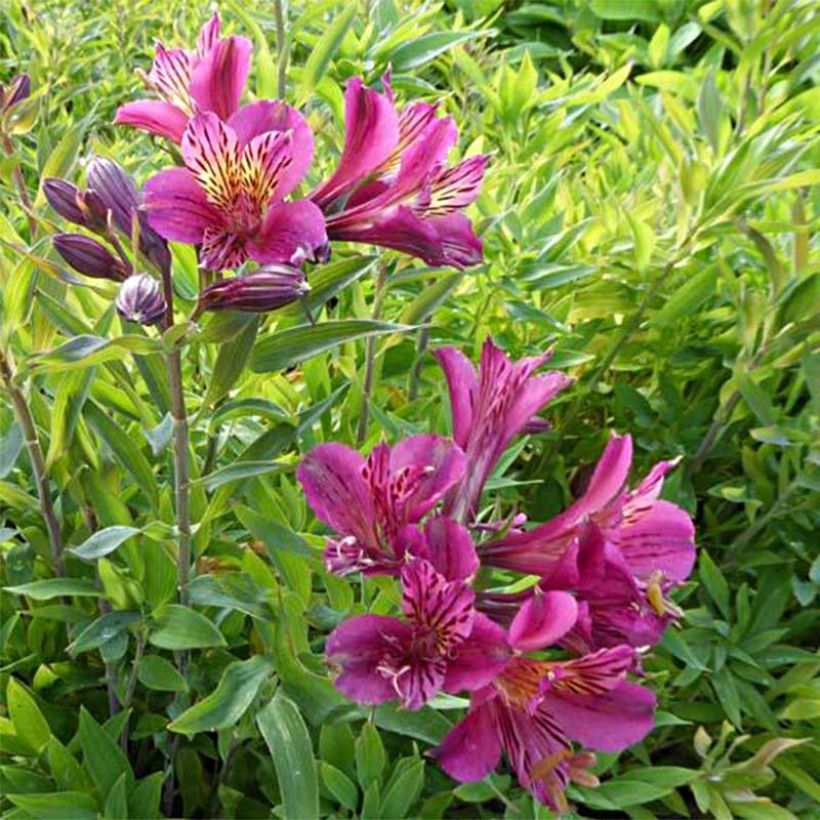

Flowering
Foliage
Plant habit
Botanical data
Alstroemeria
Mauve Majesty
Alstroemeriaceae
Peruvian Lily, Lily of the Incas
Cultivar or hybrid
Other Alstroemerias
Planting and care
Alstroemerias should be planted in spring, choosing a location in the morning sun or partial shade, in a light, well-drained, well-prepared soil, preferably sandy or loamy and slightly acidic to neutral, and not too fertile. While they appreciate moisture to support their flowering, they adapt quite well to drier soils in summer. These plants are quite hardy if the soil is not waterlogged in winter. You can protect the stump with a thick mulch of leaves or fern fronds in autumn. Slugs (and tortoises) love young shoots; make sure to protect them.
As the plant completely disappears in autumn, it is preferable to mark its location. Do not hoe near the clump: the tuberous roots are often wandering and are fragile. Weed carefully by hand if necessary.
Planting period
Intended location
Care
-
, onOrder confirmed
Reply from on Promesse de fleurs
Haven't found what you were looking for?
Hardiness is the lowest winter temperature a plant can endure without suffering serious damage or even dying. However, hardiness is affected by location (a sheltered area, such as a patio), protection (winter cover) and soil type (hardiness is improved by well-drained soil).

Photo Sharing Terms & Conditions
In order to encourage gardeners to interact and share their experiences, Promesse de fleurs offers various media enabling content to be uploaded onto its Site - in particular via the ‘Photo sharing’ module.
The User agrees to refrain from:
- Posting any content that is illegal, prejudicial, insulting, racist, inciteful to hatred, revisionist, contrary to public decency, that infringes on privacy or on the privacy rights of third parties, in particular the publicity rights of persons and goods, intellectual property rights, or the right to privacy.
- Submitting content on behalf of a third party;
- Impersonate the identity of a third party and/or publish any personal information about a third party;
In general, the User undertakes to refrain from any unethical behaviour.
All Content (in particular text, comments, files, images, photos, videos, creative works, etc.), which may be subject to property or intellectual property rights, image or other private rights, shall remain the property of the User, subject to the limited rights granted by the terms of the licence granted by Promesse de fleurs as stated below. Users are at liberty to publish or not to publish such Content on the Site, notably via the ‘Photo Sharing’ facility, and accept that this Content shall be made public and freely accessible, notably on the Internet.
Users further acknowledge, undertake to have ,and guarantee that they hold all necessary rights and permissions to publish such material on the Site, in particular with regard to the legislation in force pertaining to any privacy, property, intellectual property, image, or contractual rights, or rights of any other nature. By publishing such Content on the Site, Users acknowledge accepting full liability as publishers of the Content within the meaning of the law, and grant Promesse de fleurs, free of charge, an inclusive, worldwide licence for the said Content for the entire duration of its publication, including all reproduction, representation, up/downloading, displaying, performing, transmission, and storage rights.
Users also grant permission for their name to be linked to the Content and accept that this link may not always be made available.
By engaging in posting material, Users consent to their Content becoming automatically accessible on the Internet, in particular on other sites and/or blogs and/or web pages of the Promesse de fleurs site, including in particular social pages and the Promesse de fleurs catalogue.
Users may secure the removal of entrusted content free of charge by issuing a simple request via our contact form.
The flowering period indicated on our website applies to countries and regions located in USDA zone 8 (France, the United Kingdom, Ireland, the Netherlands, etc.)
It will vary according to where you live:
- In zones 9 to 10 (Italy, Spain, Greece, etc.), flowering will occur about 2 to 4 weeks earlier.
- In zones 6 to 7 (Germany, Poland, Slovenia, and lower mountainous regions), flowering will be delayed by 2 to 3 weeks.
- In zone 5 (Central Europe, Scandinavia), blooming will be delayed by 3 to 5 weeks.
In temperate climates, pruning of spring-flowering shrubs (forsythia, spireas, etc.) should be done just after flowering.
Pruning of summer-flowering shrubs (Indian Lilac, Perovskia, etc.) can be done in winter or spring.
In cold regions as well as with frost-sensitive plants, avoid pruning too early when severe frosts may still occur.
The planting period indicated on our website applies to countries and regions located in USDA zone 8 (France, United Kingdom, Ireland, Netherlands).
It will vary according to where you live:
- In Mediterranean zones (Marseille, Madrid, Milan, etc.), autumn and winter are the best planting periods.
- In continental zones (Strasbourg, Munich, Vienna, etc.), delay planting by 2 to 3 weeks in spring and bring it forward by 2 to 4 weeks in autumn.
- In mountainous regions (the Alps, Pyrenees, Carpathians, etc.), it is best to plant in late spring (May-June) or late summer (August-September).
The harvesting period indicated on our website applies to countries and regions in USDA zone 8 (France, England, Ireland, the Netherlands).
In colder areas (Scandinavia, Poland, Austria...) fruit and vegetable harvests are likely to be delayed by 3-4 weeks.
In warmer areas (Italy, Spain, Greece, etc.), harvesting will probably take place earlier, depending on weather conditions.
The sowing periods indicated on our website apply to countries and regions within USDA Zone 8 (France, UK, Ireland, Netherlands).
In colder areas (Scandinavia, Poland, Austria...), delay any outdoor sowing by 3-4 weeks, or sow under glass.
In warmer climes (Italy, Spain, Greece, etc.), bring outdoor sowing forward by a few weeks.

































